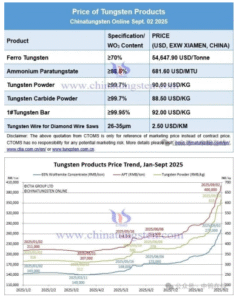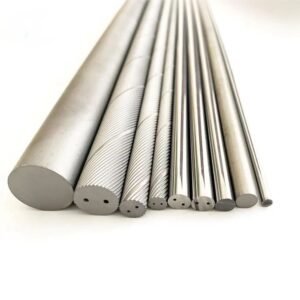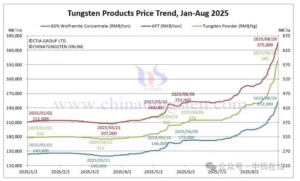CNC (Computer Numerical Control) cutting is an essential process in modern manufacturing, allowing for high-precision machining of various materials. The selection of materials directly affects machining performance, tool life, cost, and final product quality. Different industries—such as aerospace, automotive, medical, and mold-making—require specific materials based on their mechanical properties, durability, and ease of machining.
Among the most commonly used materials in CNC cutting are metals, plastics, composites, and specialty materials. Each category has distinct characteristics that determine its suitability for specific applications. Understanding these materials can help manufacturers optimize machining efficiency and select the best cutting tools.
Metals: The Foundation of CNC Machining
Metals are the most widely used materials in CNC machining due to their high strength, durability, and resistance to heat and wear. They are essential for manufacturing engine components, industrial parts, tools, and precision equipment.
Aluminum is one of the most popular CNC materials because of its lightweight nature, corrosion resistance, and excellent machinability. Alloys like 6061 and 7075 are widely used in aerospace, automotive, and consumer electronics. Aluminum can be cut at high speeds with minimal tool wear, making it cost-effective for both prototyping and mass production.
Steel and stainless steel are commonly chosen for applications that require higher strength and wear resistance. Mild steels like 1018 are used in structural components, while tool steels (D2, H13, M2) are preferred for molds, dies, and cutting tools due to their hardness. Stainless steels (304, 316, 410) provide corrosion resistance, making them ideal for medical instruments, food processing equipment, and marine applications. However, steels are more challenging to machine due to their hardness, requiring high-performance carbide cutting tools with advanced coatings like CVD or PVD.
Titanium is a high-performance metal used in aerospace, medical implants, and high-end industrial applications. It has an excellent strength-to-weight ratio and superior corrosion resistance, but its low thermal conductivity makes it difficult to machine. Tungsten carbide cutting tools are necessary to handle titanium, ensuring precision and tool longevity.
Other metals, such as brass and copper, are widely used for their good electrical conductivity and machinability. Brass is ideal for electronic components and fittings, while copper is commonly found in heat exchangers and electrical parts. These materials require sharp cutting tools to prevent burr formation and ensure clean machining.
For extreme wear resistance, tungsten and tungsten carbide are used in specialized applications. Tungsten carbide, known for its exceptional hardness, is primarily used in cutting tools, mining equipment, and wear-resistant components. Due to its extreme hardness, machining tungsten carbide requires diamond or CBN (cubic boron nitride) cutting tools.
Plastics: Lightweight and Versatile
Plastics are widely used in CNC machining for applications that require lightweight, non-conductive, and corrosion-resistant materials. They are commonly found in medical devices, automotive components, and consumer electronics.
ABS (Acrylonitrile Butadiene Styrene) is one of the most frequently machined plastics due to its impact resistance, affordability, and ease of machining. It is widely used in prototyping, automotive interiors, and electronic housings. However, it has a low melting point, so machining must be carefully controlled to prevent deformation.
Acrylic (PMMA) is valued for its clarity and light transmission, making it ideal for displays, optical components, and medical equipment. However, it is prone to cracking and chipping if not machined with the correct speeds and cutting tools.
Nylon and Delrin (Acetal) are strong, wear-resistant plastics commonly used in gears, bushings, and industrial machine parts. They have self-lubricating properties, making them ideal for low-friction applications. Machining these plastics requires sharp tools to prevent burr formation and maintain precision.
PEEK (Polyether Ether Ketone) is a high-performance engineering plastic used in aerospace, medical implants, and high-temperature applications. It offers superior strength, chemical resistance, and thermal stability, but it is expensive and requires careful machining to prevent material waste.
Composites: High-Strength, Low-Weight Solutions
Composites are engineered materials designed for high strength, low weight, and exceptional fatigue resistance. They are extensively used in aerospace, automotive, and sporting goods manufacturing.
Carbon fiber reinforced polymer (CFRP) is one of the strongest and lightest materials used in CNC machining. It has excellent tensile strength and fatigue resistance, making it a top choice for aircraft structures, race cars, and medical prosthetics. However, carbon fiber is highly abrasive, causing rapid tool wear. Diamond-coated tools are recommended for machining CFRP to ensure precision and minimize tool replacement costs.
Fiberglass reinforced plastic (FRP) is another widely used composite, known for its corrosion resistance and affordability. It is commonly found in boat hulls, wind turbine blades, and industrial tanks. However, it is brittle and prone to delamination, requiring slow feed rates and specialized cutting techniques.
Specialty Materials: Extreme Performance for High-Tech Industries
Certain industries require specialized materials that offer superior hardness, heat resistance, or corrosion protection.
Ceramics are used in aerospace, biomedical, and cutting tool applications due to their high hardness and wear resistance. However, they are brittle and require diamond grinding tools for precision machining.
Superalloys such as Inconel, Hastelloy, and Monel are designed for extreme temperature and corrosion resistance. They are commonly used in jet engines, gas turbines, and nuclear reactors. However, they are notoriously difficult to machine and require high-speed carbide tools with PVD coatings to handle the heat and stress.
Conclusion: Selecting the Right Material for CNC Cutting
Choosing the right material for CNC machining depends on several factors, including mechanical strength, thermal conductivity, machinability, and cost.
- Metals like aluminum, steel, titanium, and tungsten carbide are ideal for industrial applications requiring high strength and durability.
- Plastics such as ABS, acrylic, nylon, and PEEK are suitable for lightweight, corrosion-resistant applications.
- Composites like carbon fiber and fiberglass provide high strength-to-weight ratios, especially in aerospace and automotive industries.
- Specialty materials, including ceramics and superalloys, are used in high-tech applications where extreme durability and heat resistance are required.
At Zhuzhou Zhirong Advanced Materials Co., Ltd., we specialize in high-performance tungsten carbide cutting tools designed for machining metals, plastics, composites, and superalloys. Our products, including CVD/PVD-coated carbide inserts, end mills, drills, and carbide rods, ensure superior wear resistance and precision machining.
For expert guidance on selecting the best cutting tools for your CNC applications, contact us at:
crystalyuan@zrzhirong.com
www.zhirongcarbide.com





